On test: Base-spec and bestselling Ford Ranger pickups face off
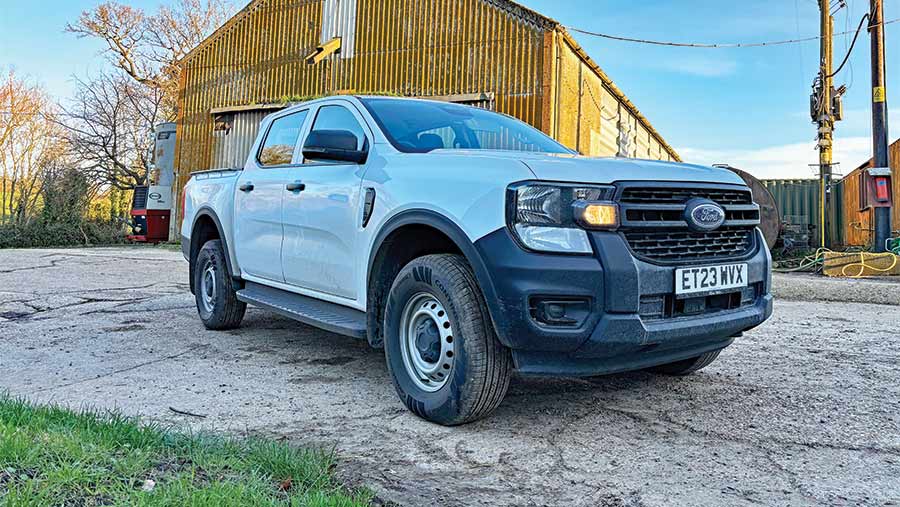 © MAG/Oliver Mark
© MAG/Oliver Mark Almost £20,000 separates the two Ranger pickups featured in this week’s Country Car, in what looks a rank mismatch.
It’s the meat-and-potatoes XL, yours for a smidge over £28k, versus some of Ford’s fanciest fare, in the form of the best-selling Wildtrak.
Yet strip off the glitz and you’ll find their body-on-frame chassis are identical and there’s nothing to split them in terms of towing and carrying.
See also: Pickup and commercial 4×4 buyer’s guide 2023-24
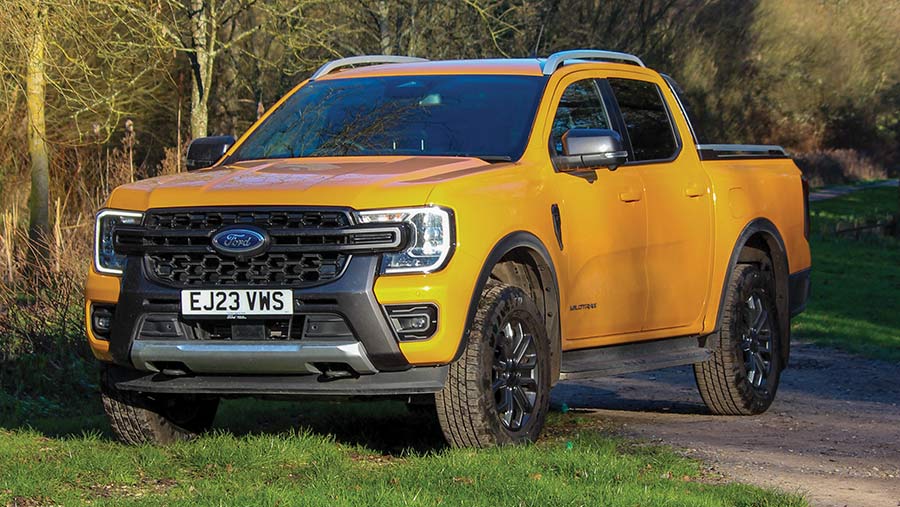
© MAG/Oliver Mark
The XL is now Ford’s most basic Ranger, offering buyers the full workaday look: 16in steel wheels and black plastic arch surrounds, cloth seats and a lick of retina-scorching white paint.
But its appearance belies a surprisingly generous standard spec, including a 10in portrait-shaped touchscreen, adaptive cruise and the convenience of Apple Car Play and Android Auto.
The apparent good value and solid working credentials of the XL are reason to question the benefits of the gussied-up Wildtrak, for so long one of the golden geese of Ford’s commercial vehicle division.
Seen here in lurid eggy-mustard livery (officially “cyber orange”), it gets 18in alloys under painted arches, silver side steps and all the gizmos you’d expect for a price that will inevitably drift northwards of its £45,765 starting point once a few optional extras have been accounted for.
Engine
The Wildtrak’s trump card is its 240hp, 3-litre V6. For anyone regularly towing stock trailers or heavily loaded flatbeds, this alone might prove to be the deal-maker.
It’s a big lump and takes up more space than the old 3.2-litre inline five-cylinder, requiring the engineers to make the whole truck 50mm wider and longer as a result.
With 600Nm at its disposal, there’s no shortage of pulling power, though it can feel a little restrained at full throttle. It’s also a boozer, and we failed to better its quoted 28mpg.
Pare back the budget to XL grade and you’ll save on both up-front and running costs, with Ford’s 2-litre EcoBlue – in tame single-turbo SiT guise – managing to beat its promised 33mpg on a steady run.
The downside is the comparatively limited 170hp and 405Nm output. However, that still trounces the 1.9-litre engine in any version of the Isuzu D-Max, and it’s seriously refined in comparison.
If those stats don’t quite do it for you, the mid-range models might offer an appealing halfway house.
On those, you can get the 2-litre EcoBlue block as a BiT bi-turbo, ramping performance up to 205hp/500Nm and shaving more than a second off the SiT’s 0-62mph sprint.
That same engine can be specced in the Wildtrak too. Doing so will hack about five grand off the cost.
Transmission
Cylinders aside, the other big difference between the two is the cog count.
It totals 10 in the Wildtrak, with the leisurely torque delivery allowing the auto box to drift smoothly up and down the ratios, often imperceptibly from the cab.
The one downside is on the controls front, with the squarish transmission shifter on the centre console all too easily slipping straight from drive to park when reverse is the target.
As part of Ford’s major Ranger revamp 18 months ago, it introduced a new full-time four-wheel drive system on bi-turbo and V6 models that is far more sophisticated than before.
Beyond the usual drivetrain offerings – two high, four high/low and the option of a locking rear differential – there’s now an automatic “set-and-forget” 4A mode that leaves all the decisions to an on-board computer.
When on the road, most of the torque is sent to the rear axle via the same BorgWarner two-speed transfer case as used in the big F150s.
But, thanks to myriad sensors monitoring wheel slip, throttle input and the like, it can feather in the drive to the front wheels whenever necessary.
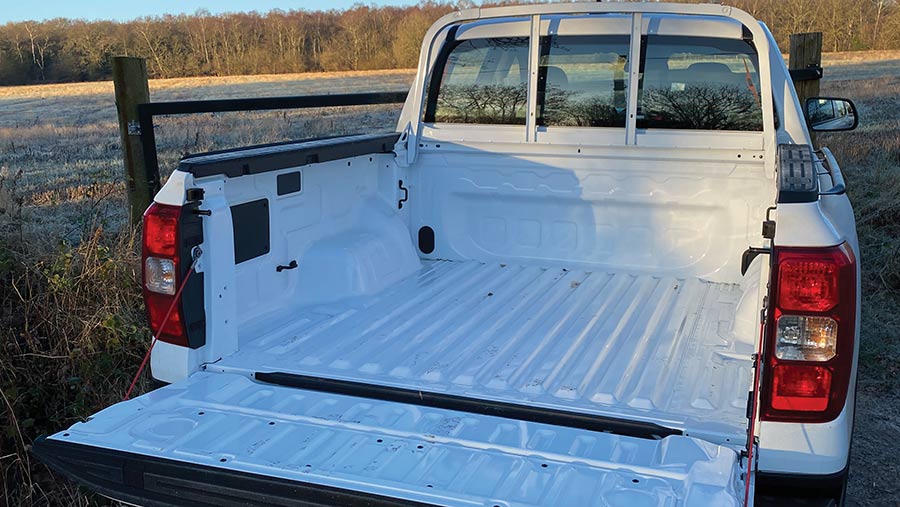
© MAG/Oliver Mark
It means the transfer case effectively becomes a central differential, fully opening, fully locking (basically four-wheel drive high range) or somewhere between.
Drivers keen to take a bit more control can select from a handful of driving modes that alter gear shift timing, throttle response and the traction control system.
Among them, “eco” is basically two-wheel-drive, “mud” selects four high and dampens throttle input, and “towing” provides more grip through adjustments to the throttle, steering and brake input.
The XL offers a more orthodox approach, central to which is a six-speed manual transmission with well-spaced ratios and a gate that is satisfyingly clean and precise.
It, and the slightly fancier XLT, have a rudimentary part-time four-wheel drive system that is far less reliant on electronics. There’s rear-wheel drive for on-road driving and four high or low off-road, plus the option of a rear diff lock.
Suspension and brakes
The Wildtrak has disc brakes all round while the XL has drums at the back, but both ride on a combination of front coils and rear leaf springs to support their tonne-plus payloads.
That means neither get the fancier Bilstein position-sensitive dampers fitted to mid-range Tremor and smarter Wildtrak X models (both 2-litre, 205hp).
Both of these are more off-road focused so, as well as the Raptor-style suspension, they get a steel underbelly bashplate and features such as Trail Control, which is effectively a slow-speed cruise control.
Of our two test models, it’s the XL that possibly has the edge in terms of practicality.
Although it goes without a bed liner as standard – an option probably worth taking – it has a useful metal frame behind the cab to support long items such as ladders.
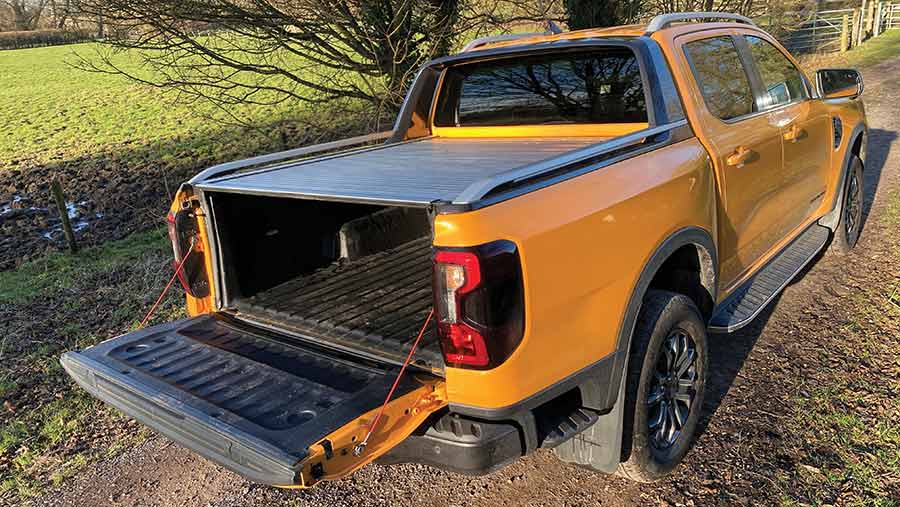
© MAG/Oliver Mark
The Wildtrak instead has a showy but pointless “rollover bar” and ours was fitted with an outrageously pricey powered load cover (£1,800).
It also has Ford’s novel “box step” – a recess behind the rear wheel that provides easier access to the load bed.
It’s only available on the XLT and above, but if you’ve never had it you’re unlikely to miss it on the XL.
Interior
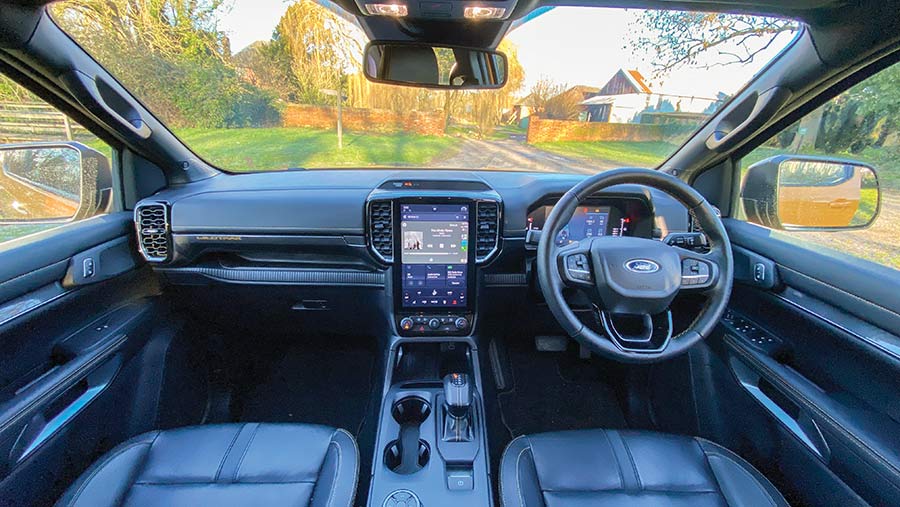
The Wildtrak’s interior (above) and the XL (below) © MAG/Oliver Mark
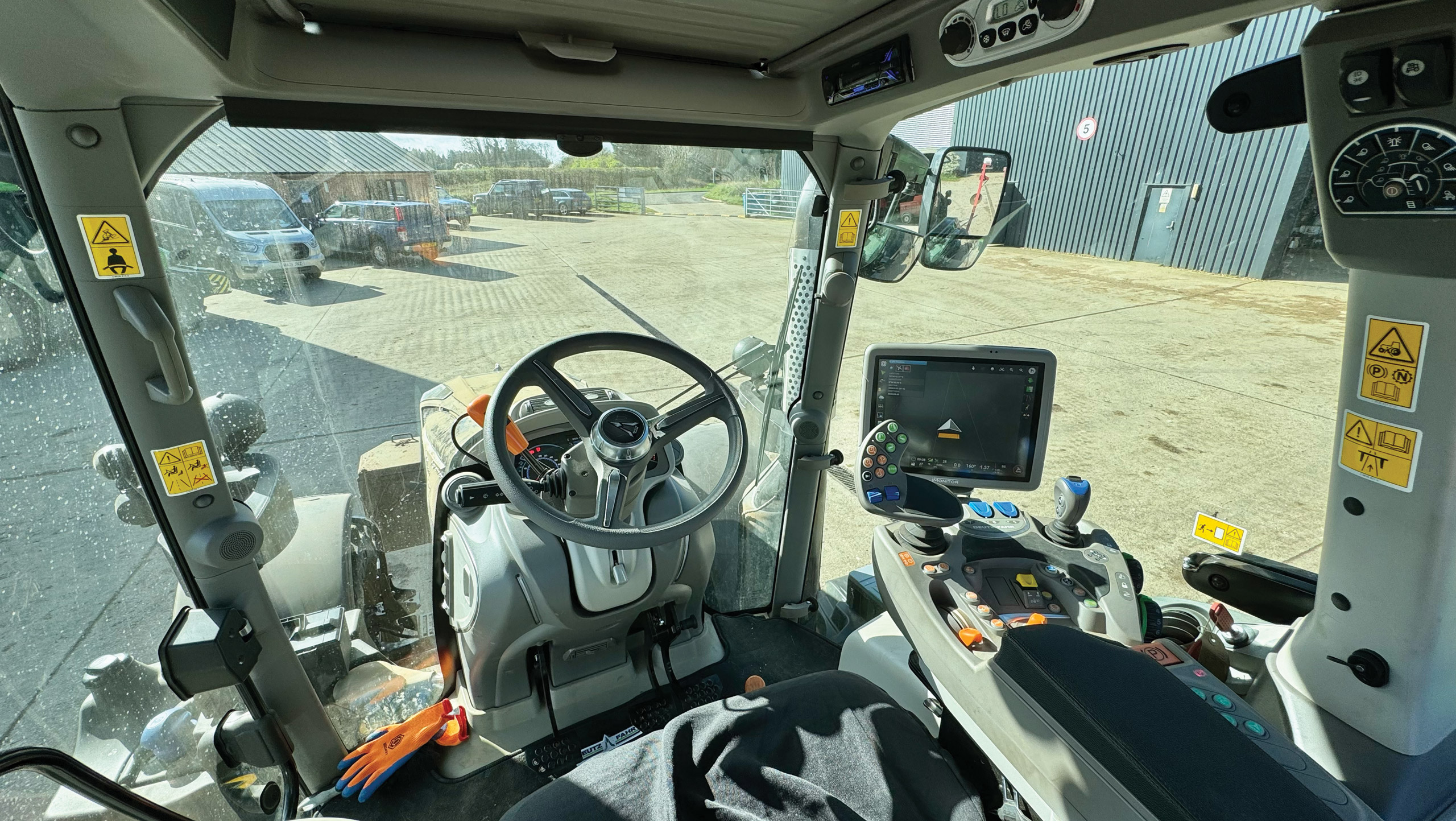
© MAG/Oliver Mark
The cabs of both were completely overhauled as part of the relaunch, giving more hip and shoulder room, abundant storage and a Tesla-style central screen.
So, splitting the two is really a question of interior embellishments, of which the Wildtrak gets plenty.
We’re talking vinyl-wrapped console, a driver’s seat partly trimmed in leather and with powered 10-way adjustment, an electronic park brake and keyless start.
The XL goes without them, meaning owners are sent back to the Stone Age with an ignition barrel for the key, handles to alter the position of the fabric seats and a caveman-esque manual handbrake.
The Wildtrak’s tinted windows aren’t missed either, and the scratchier plastics will probably prove more blessing than curse in the long run.
One important difference is that the Wildtrak comes with dual-zone climate control; the XL doesn’t have any sort of air conditioning as standard, so buyers will need to factor in the extra £600 to have it fitted.
Settings for this are displayed on the central touchscreen that, in the posher model, is 2in bigger (but not noticeably so). It includes a satnav and talks – or sings – through an extra couple of speakers.
Ironically, the XL’s screen software seemed a bit quicker, and owners needn’t fret about being satnav-less as Ford’s wireless Sync 4A system can be set up to run a smartphone map through Apple Car Play or Android Auto.
The displays are generally good – the lower quarter displays regularly used functions, the top half navigation – although they inevitably end up caked in fingerprints.
And there’s plenty of technology across the board. XLs get speed sign recognition, lane-keeping assist and adaptive cruise control, plus a rear-view camera and sensors.
Wildtraks don’t add a lot else, beyond a 360deg camera that can help slot it into a Micra-sized parking space.
Farmers Weekly verdict
It’s a giant killing upset in this writer’s eyes, with the plucky lower-leaguer winning on value for money.
There’s no doubt the Wildtrak’s fancy 4×4 system is slick, but all that artificial semi-intelligence brings complication that may cause expensive problems in a decade’s time.
So, for all the fripperies, it’s only the big V6 engine that the XL really misses out on. If you can do without that, you can land a decent pickup at a fraction of the cost.
The range
There are six double-cab Ranger models in total, or seven if you include the souped-up Raptor.
The Wildtrak remains the most popular, though it has been superseded at the apex of the range by the new marquee Premium model.
- XL 2-litre, 170hp, six speed manual £28,865
- XLT 2-litre, 170hp, six-speed manual or auto £32,465
- Tremor 2-litre, 205hp, 10-speed auto £38,865
- Wildtrak X 2-litre 205hp, 10-speed auto £42,666
- Wildtrak 3 litre, 240hp, 10-speed auto £45,716 (or 2-litre, 205hp, 10-speed auto £40,666)
- Platinum 3 litre, 240hp, 10-speed auto £47,766
*On-the-road prices ex vat
Wildtrak V6
- Engine 3-litre V6
- Max power 240hp
- Max torque 600Nm
- Transmission 10-speed auto with full-time 4wd
- 0-62mph 8.7sec
- Combined consumption 28mpg
- Kerb weight 2,295kg
- Payload 1,059kg
- Towing capacity 3,500kg
- On-the-road price (ex vat) £45,716
- As tested £49,765
- Notable extras “Cyber orange” paint (£600), powered roller shutter (£1,800), “power pack 3” with power inverter, wireless charger and spare accessory switches (£450)
Ranger XL SiT
- Engine 2-litre, four-cyl EcoBlue
- Max power 170hp
- Max torque 405Nm
- Transmission Six-speed manual
- 0-62mph 11.6sec
- Combined consumption 33.2mpg
- Kerb weight 2,132kg
- Payload 1,074kg
- Towing capacity 3,450kg
- On-the-road price (ex vat) £28,608
- As tested £29,712
- Notable extras Plastic side steps (£120), underbody wax (£300), manual air-con (£600), “body protection pack” with underbody protection, locking rear axle and fuel tank guard (£360)

